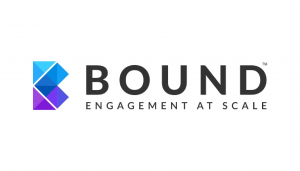 When it comes to B2B marketing, the most effective forms of communication are those that are targeted and personalized. This couldn’t be more true for a company’s website, yet many marketers are still missing the majority of their website visitors, especially those they don’t know.
When it comes to B2B marketing, the most effective forms of communication are those that are targeted and personalized. This couldn’t be more true for a company’s website, yet many marketers are still missing the majority of their website visitors, especially those they don’t know.
Did you know that 95% of your website visitors are anonymous? That’s a staggering number of potential customers you’re most likely not engaging with. However, what you do know (and here comes the good news) is that they are brand aware, they are in market and they are considering your company.
One of the most important elements necessary to developing more personalized web experiences and attracting and connecting with all of your visitors (even those anonymous ones), is through segmentation.
Segmentation is the process of dividing meaningful groups of your web audience for the purpose of connecting with all website visitors and reaching your stated business goals. Many consumers now expect experiences that are tailored to their needs, and segmentation offers companies the opportunity to define the specific audiences that matter to them and then offer unique experiences to each of those groups.
Effective Segmentation
In order to segment effectively, the following concepts should be kept in mind:
Segmentation should be purposeful and align with a predetermined business objective. For example, if your goal is to earn more MQLs, a behavior-based segment is more effective than a role-based segment.
Segmentation should be general and large enough to be effective. For example, given the same value, a segment that is larger yields more results than a more specific segment.
Segmentation should be valuable and take into account buying power. For example, segmenting for decision makers is more impactful than segmenting for influencers.
Six Different Ways Marketers can Segment Website Visitors
Depending on your business and industry, there are a number of ways you may want to define your segments. Here are six ways B2B marketers should consider segmenting their website visitors:
Industry
Engage prospects from key industries. Leverage existing industry-based content, tailor website messaging, and feature relevant products by industry or company size.
Account
Engage prospects or customers from key accounts. Determine the optimal message for key accounts and direct those prospects to relevant content.
Role
Engage key buying roles. Direct them to areas of the website most relevant to them and deliver persona-based messaging throughout the buyer’s journey.
Intent
Engage prospects based on offsite intent. Position the right product or deliver a stronger call-to-action for in-market visitors.
Geography
Engage prospects or customers from different geographies. Promote location-specific events, programs, or messaging.
Program Engagement
Engage prospects or customers based on previous marketing interactions. Use activity from your marketing automation platform to determine what content or messaging to serve.
Also Read: Ask Yourself, What’s Bringing Audiences to Your Website?
The value of segmentation comes through when these attributes are layered together. For example, Siemens, one of the world’s largest producers of energy-efficient, resource-saving technologies, traditionally segmented by roles, such as CFO, engineer, marketing or plant managers. However, through the course of scaling personalized messages to these audiences, they found that these segments performed better when the role was combined with industry.
A food and beverage engineer has different needs than an automotive engineer. They may be looking at the same solutions, but they are looking to solve different problems.
Segmentation is critical to providing marketers with valuable insights about different groups of visitors (especially the anonymous ones), instead of simply analyzing the results across your entire visitor base. Determining what experiences work for different audiences will form the basis of a powerful and successful website personalization strategy.
Also Read: Real-life Food Photography Drives Marketing



